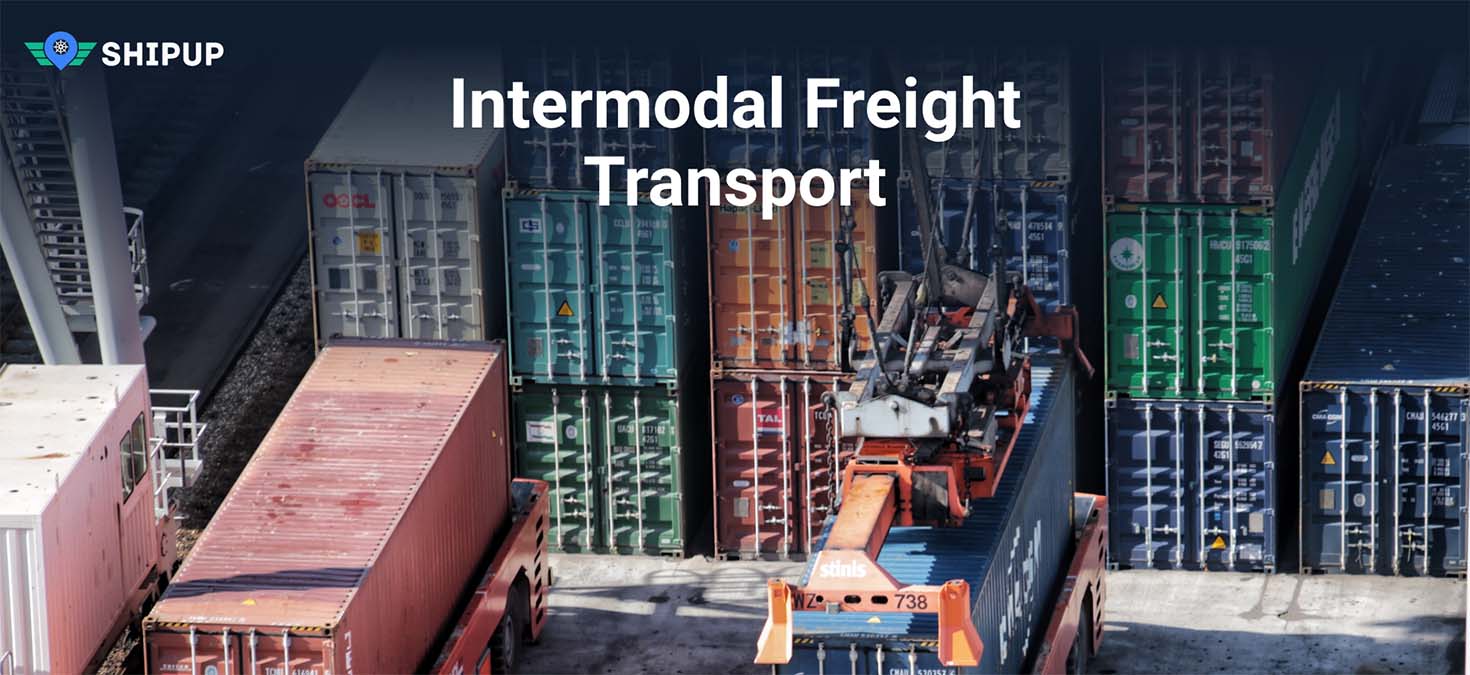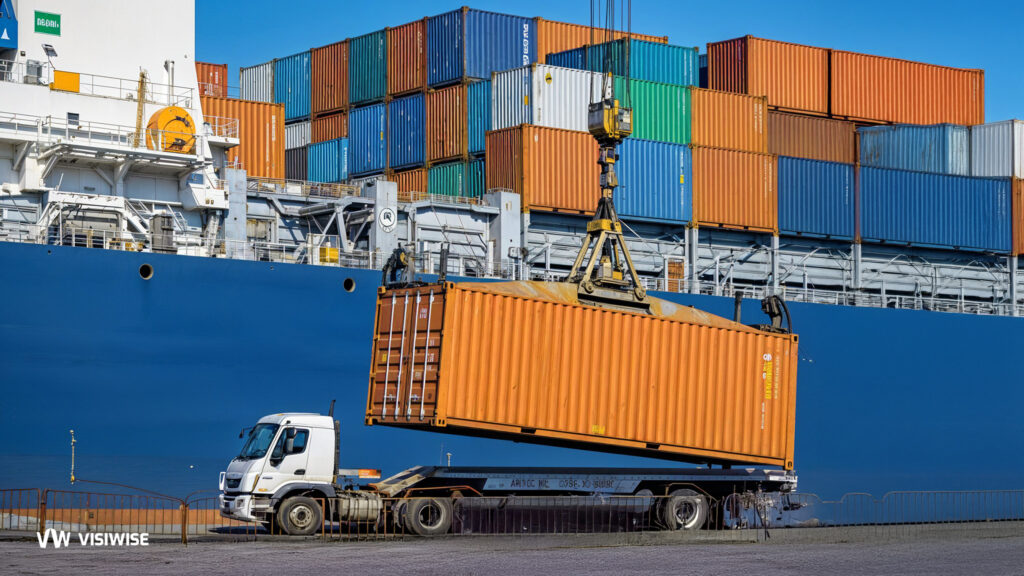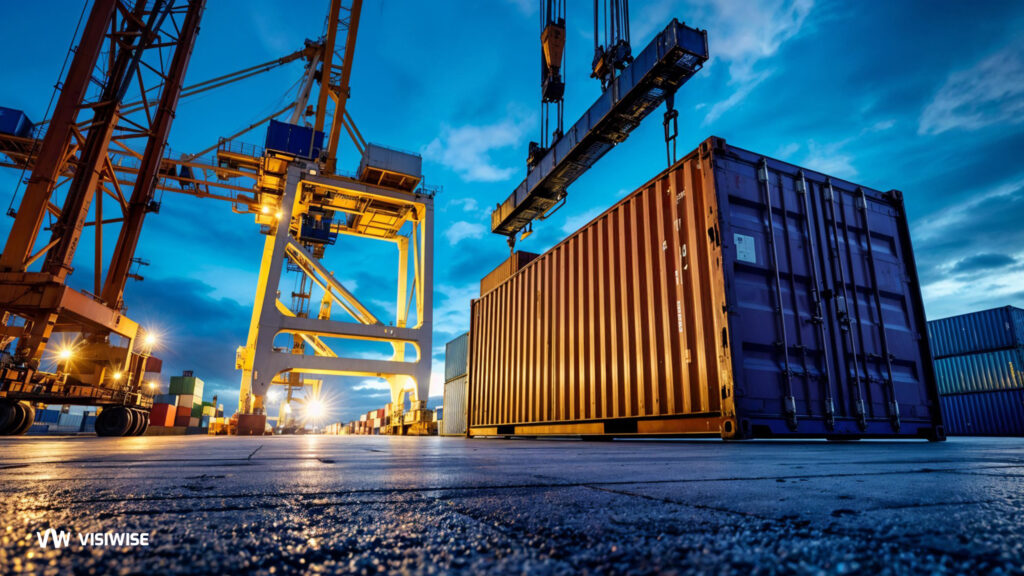Intermodal freight transport is an important part of the global logistics network. It involves combining multiple modes, such as rail and truck, to move products from one destination to another. This type of transportation can help companies reduce their overall costs while increasing speed, efficiency, and reliability. Intermodal freight transport has numerous advantages over traditional methods of moving goods, making it a vital part of the international shipping process.
Benchmarking Intermodal Freight Transport
Benchmarking Intermodal Freight Transport has become an important aspect of modern logistics. When implemented properly, intermodal freight transport can save companies time, money and resources while also providing a more efficient way to move goods around the world. This article will explore the benefits of benchmarking intermodal freight transport and how it can help businesses achieve their goals.
Benchmarking is the process of comparing one’s own performance with that of others in order to identify areas for improvement. In terms of intermodal freight transport, the benchmark would compare various aspects such as cost savings, route planning, load weights and delivery times between different providers. Comparing these metrics against each other allows businesses to determine which provider offers the most cost-effective and reliable solution for transporting goods within their supply chain network.
What Is Intermodal Freight?
Intermodal freight transport is a type of shipping that uses multiple modes of transportation to move goods from one location to another. It combines the use of trucks, trains, barges, and ships in order to provide an efficient and cost-effective way to move goods over long distances. Intermodal freight provides businesses with the ability to transport large volumes of goods in an environmentally friendly manner while saving money on fuel costs.
This type of transportation has been growing in popularity since its conception in the 1950s due to its flexibility and convenience. With intermodal freight transport, businesses can choose the most suitable mode for their needs, whether air, rail, sea or truck; they can select a combination that best meets their requirements. This option also reduces time spent on delivery as items are quickly transferred between each mode which ultimately leads to faster transit times for customers.
Modes of Transportation in Logistics
Transportation is a key component of logistics. Intermodal freight transport has emerged as one of the most popular methods, but there are many variations available. This article will look at five different modes of transportation that can be employed in the logistics process.
Road Transport
The first mode is road transport, which is often used for short trips and provides convenience. Road vehicles such as trucks and vans are able to quickly move goods from point A to B with minimal disruption. While this option does have some drawbacks, such as traffic congestion, it remains a popular choice among businesses due to its flexibility and cost-effectiveness.
Rail Transport
Another option is rail transport, which offers reliability and efficiency over long distances. Trains are able to carry large quantities of cargo in a relatively short time frame compared to other modes of transportation, such as ships or airplanes.
With so many options available today, it’s easy to see why there is such a great demand for transport services. The needs of each business are unique, which makes it even more important to find the right shipping company that is able to meet those needs and provide excellent customer service.
Sea Freight Transport
Sea Freight Transport is a major part of the global logistics industry. It involves the transportation of goods by sea, as well as any necessary loading or unloading operations. Sea freight transport is an important component in intermodal freight transport that uses both land and sea routes.
The main advantages of using sea freight transportation are its cost-effectiveness and flexibility to move bulky items with ease. By choosing to use a maritime route, shipping companies can save money on fuel costs while also having access to larger vessels than they could if traveling by land only.
Furthermore, changes in cargo destination can be easily made during transit via the different ports along the way. Additionally, most ocean vessels have refrigerated areas for transporting perishable products over long distances without risk of spoilage or damage due to rough weather conditions during transit.
Intermodal Transportation Types
Intermodal freight transport is an important part of the global logistics industry. By transporting goods in multiple ways, such as by truck, rail, barge and plane, intermodal transportation helps to move items quickly and easily across different regions. There are several different types of intermodal transportation available today that can meet a wide range of needs, from small business operations to large-scale international distribution chains.
The most common type of intermodal transportation is containerized shipping, which involves consolidating goods into standard-sized containers for transport by land or sea. This method allows for efficient loading and unloading, as well as tracking throughout the journey. Other forms include flat rack containers for bulky items and platform trailers for large machinery or other oversize cargo. For air freight shipments, pallets are often used to streamline packing and delivery processes.
Before intermodal transportation, the goods that needed to be delivered had to be shipped by rail or truck. This was often an inefficient process, as vessels and vehicles are built with their own specialized functions in mind, which can limit how many shipments they can carry at a time.
In addition, it is difficult to ensure that the goods arrive safely without a specialized container. By using standardized containers, it is possible to quickly and safely load and unload shipments. In addition, using intermodal transportation allows for more efficient routes for the shipment of goods across the country.
Advantages of Intermodal Transport
Intermodal freight transport is an efficient and cost-effective way to move goods from one place to another. This type of transportation uses multiple modes of transit, such as trucks, trains, ships, or planes, to move cargo around the world. There are several advantages associated with this method of transport that make it a popular choice for businesses.
The primary advantage of intermodal freight transport is its cost savings potential. By utilizing multiple forms of transport for one shipment, companies can significantly reduce their fuel costs as well as their labor costs associated with handling each shipment separately. Additionally, this form of transportation requires fewer vehicles and staff members than traditional methods, so businesses can save money on those expenses as well.
Another key benefit of intermodal freight transport is its environmental impact. By combining multiple forms of transport, businesses can reduce their carbon footprint and limit the amount of time spent on the road.
The primary disadvantage of intermodal freight transport is that it requires more advanced planning than traditional methods. Businesses must schedule shipments carefully to ensure that the vehicle transporting their goods is big enough for everything they need to ship. Additionally, it may take longer for intermodal freight transport to arrive than traditional methods.
Visiwise and Freight Transport
Freight transport has different aspects to take care of. For instance, visibility is one of the most common needs for logistics companies, and it is always missing in the workflow. Visiwise is a visibility platform to solve this challenge with simple tracking and management tools on Visiwise Platform. No matter how many shipments you have, we have easy-to-use tools to bring visibility and control into your logistics for better shipment management and business efficiency.
Sign up and start your 14 days of free trial to experience how Visiwise has helped hundreds of companies save time and cost with better cargo management.



